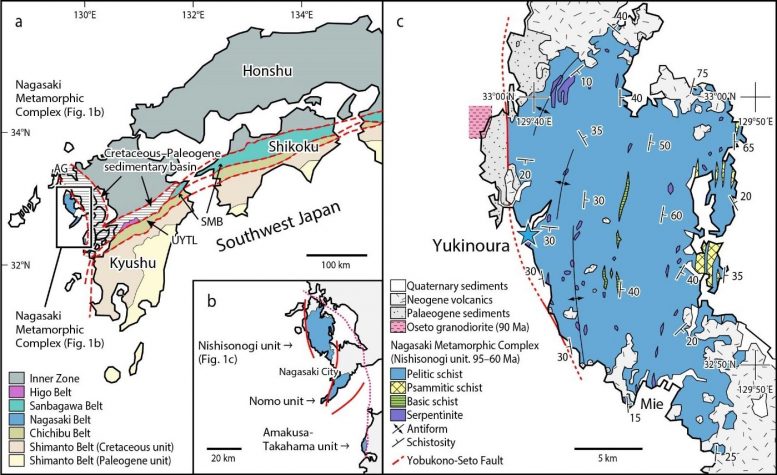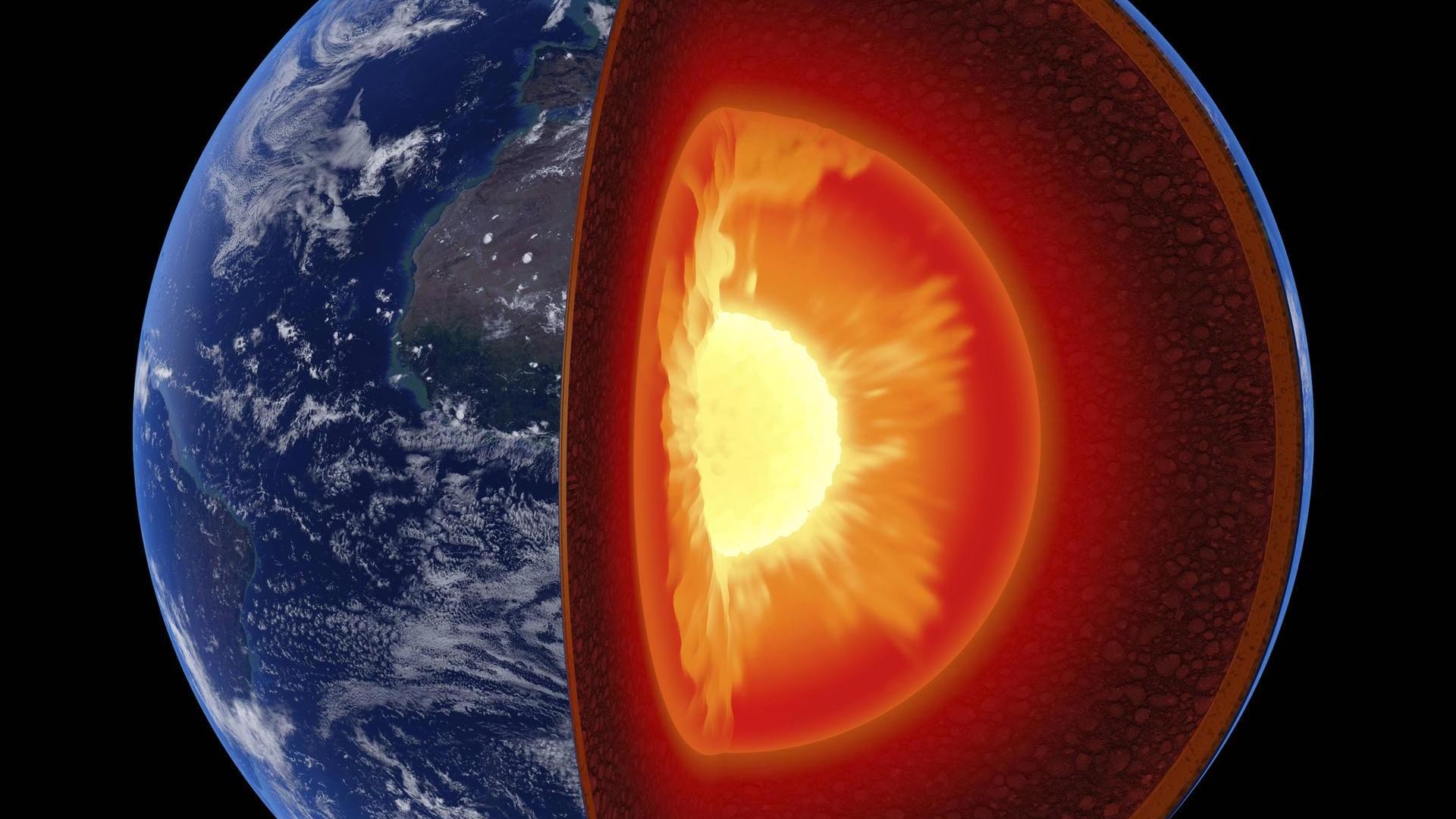Since the crystals of micro diamonds are finer than 1 micron, they have been confirmed by the latest analytical techniques such as Raman spectroscopy, soft X-ray spectroscopy, and transmission electron microscopy.
a: Electron microscope image of a microdiamond aggregate
b: Single crystals and crystallographic orientation of microdiamonds
c: Electron diffraction pattern of microdiamonds
Photo credit: Professor Tadao Nishiyama
A collaboration between researchers from Kumamoto University in Japan has discovered microdiamonds in the metamorphic rock formation Nishisonogi in the Japanese prefecture of Nagasaki. Microdiamonds in metamorphic rocks are important minerals as they form in continental collision zones and show that the crust has penetrated deeper than 120 km below the surface. After the Italian Alps, this is the second area in the world where subduction of oceanic plates can create microdiamonds in metamorphic rock.
In recent years, microdiamonds have received a lot of attention because they have been discovered in metamorphic rocks around the world and have been found to be formed during collisions between continents. It was believed that Japan would not produce such microdiamonds as it is not a continental collision zone but a subduction zone for oceanic plates. However, the first metamorphic rock microdiamonds in Japan were found in the Nishisonogi metamorphic rock formation on the west coast of Nagasaki Prefecture.

a: Geological zone in western Japan. The blue-green part is the Sanbagawa belt that crosses mainland Japan. The Nishisonogi metamorphic rock was believed to belong to the same geological formation as the Sanbagawa Belt.
b: Enlarged map of Saikai city.
c: An enlarged view of the Yukinoura district of Saikai City. The star indicates where microdiamonds were found.
Photo credit: Professor Tadao Nishiyama
The area where the microdiamonds were discovered is approximately 100 million years old chalk metamorphic rock formation. On the west coast of Saikai City in Nagasaki Prefecture, pelit and base slate blocks are scattered among serpentinite made from mantle material. Such rocks are called serpentinite melange and indicate that they rose deep in the subduction zone. Researchers found microdiamonds in the serpentinite melange here. Their formation conditions have been estimated to be around 450 ° C and a pressure of around 2.8 GPa, making them the coldest diamonds ever formed. The Nishisonogi metamorphic rocks were believed to have formed under a pressure of around 1 GPa, but it is now clear that they were ultra-high pressure metamorphic rocks that rose to 120 km after subduction – a very unexpected discovery.
“The discovery of microdiamonds from Japan’s first metamorphic rocks will rewrite Japan’s geological history,” said Professor Tadao Nishiyama, who led the study. “So far, the metamorphic rocks of Nagasaki are said to belong to a metamorphic rock belt with low temperature and high pressure, the“ Sanbagawa Belt ”, which crosses mainland Japan. However, it has become clear that these are independently formed metamorphic ultra-high pressure rocks. I expect there will be a lot of discussion about what kind of plate movement produced this formation. ”
This research was published online in Scientific reports on July 15, 2020.
Reference: “Microdiamond in an inferior metapelite from a subduction complex from the Cretaceous, Western Kyushu, Japan” by Tadao Nishiyama, Hiroaki Ohfuji, Kousuke Fukuba, Masami Terauchi, Ukyo Nishi, Kazuki Harada, Kouhei Unoki, Yousimaruke Moribe, Akyo Yasushi Mori, Miki Shigeno and Shoji Arai, July 15, 2020. Scientific reports.
DOI: 10.1038 / s41598-020-68599-7



